#thierry jousse
Video
youtube
Les B.O. de Quentin Dupieux - Blow Up - ARTE.
https://www.arte.tv/blow-up
#quentin dupieux#soundtrack#blow up#arte#video#blue magic#mr. oizo#steak#thierry jousse#marilyn manson#philip glass#alain chabat#michel hazanavicius#le daim#joe dassin#morton stevens#johannes brahms#au poste#wolfgang amadeus mozart#david axelrod
5 notes
·
View notes
Text
Qui était Glauber Rocha, cinéaste culte et révolutionnaire ?
À l’occasion de la ressortie en salle de son éblouissant “Le Dieu noir et le diable blond” (1964), retour sur le parcours et l’œuvre de la figure centrale du Cinema Novo, au Brésil.
“Glauber le film, labyrinthe du Brésil”
Écrit par Thierry Jousse
Sans doute est-il difficile, aujourd’hui, de mesurer l’aura qui fut celle de Glauber Rocha dans les années 1960. Car l’auteur du Dieu noir et le diable…
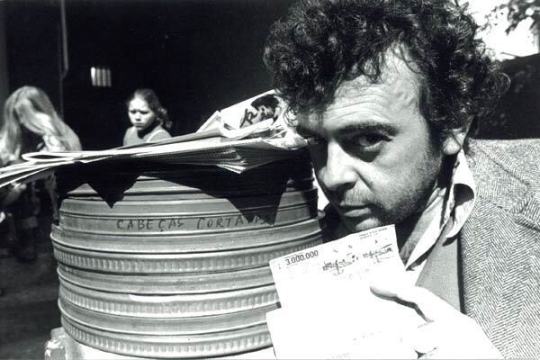
View On WordPress
1 note
·
View note
Text
1 note
·
View note
Photo

La playlist de l'émission de ce jeudi matin sur Radio Campus Bruxelles entre 6h30 et 9h : Jean-Marie Massou "Autobiographie (épisode 2)" (Autobiographie/La Belle Brute/2022) Moor Mother & Nicole Mitchell "Arms Save" (Jazz Codes/Anti Records/2022) Pierre Bastien "Pan's Nap" (Sonic Folkways/Discrepant2022) Björk "Victimhood" (Fossora/One Little Independent Records/2022) Borja Flames "Magnetismo" (Nuevo Medievo/Les Disques du Festival Permanent/Murailles Music/2022) Broadcast "Dead the Long Year" (The Noise Made By People/Warp Records/2000) THESE NEW PURITANS "Field of Reeds" (Field of Reeds/Infectious Music/2013) Sonic Youth "Blink" (Pola X Soundtrack/Barclay/1999) Colette Magny, William Klein & Chris Marker "Nous sommes le pouvoir (extrait)/ Le boa" (Magny 68/Taï-Ki/1970) Jean-Marie Straub, Danièle Huillet & Thierry Jousse "Entretiens A3" (Entretiens/Re-Rectangle/1998) Pseudo Code "Kind of a Bitch" (Slaughter in a Tiny Place/Sub Rosa/1981-2010) Christophe Clébard "Fête triste" (Honte/Knotwilg Records/2019) Sloy "Pop" (Plug/Nineteen Something/1995-2022) The Delgados "Blackpool" (Peloton/Chemikal Underground/1998) Public Image Limited "Track 8" (The Flowers of Romance/Virgin Records/1981) The Fall "An Older Lover Etc." (Slates/Rough Trade Records/1981) Jean-Louis Murat "Jeune pluie sur le chardon" (Le Manteau de Pluie (reissue)/[PIAS]/1991-2018) Brigitte Fontaine & Areski Belkacem "Où vas-tu petit garçon ?" (Brigitte Fontaine/Saravah/1972) Desmond Dekker "Israelites (New Version)" (7"/Stiff Records/1980) Curtis Mayfield "Billy Jack" ((There's No Place Like) America Today/Curtom/1975) Public Enemy "Shut Em Down (LP Version)" (12"/DefJam/1991) Jean-Marie Massou "La médecine à couler et les petits oiseaux (extrait)" (Sodorome Vol.1/La Belle Brute/2022) https://www.instagram.com/p/ClV5IOENkIP/?igshid=NGJjMDIxMWI=
0 notes
Photo

📣 Pour préparer #noel Découvrez notre coup de cœur pour le magnifique, passionnant et virevoltant : Bandes originales ! Une histoire illustrée de la musique au cinéma signé Thierry Jousse aux @editions_epa #musiqueaucinema #cinema #musique #bandeoriginale #bandeoriginaledefilm #librairie #mollat #bordeaux ##cadeaunoel #noel2022 (à librairie mollat) https://www.instagram.com/p/ClLbklejjlG/?igshid=NGJjMDIxMWI=
#noel#musiqueaucinema#cinema#musique#bandeoriginale#bandeoriginaledefilm#librairie#mollat#bordeaux#cadeaunoel#noel2022
0 notes
Photo
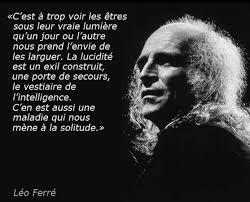
Publié dans Proverbes & Citations, Images, Léo Ferré, Citations GILLES DELEUZE : “LÉO FERRÉ…c'est un monde. C'est une pluralité de mondes. FERRÉ, c'est une galaxie” THIERRY JOUSSE, SOUS LE PAVÉ LA RAGE, LES INROCKS n°61 “FERRÉ est dangereux parce qu'il y a chez lui une violence (maîtrisée) qui s'appelle le courage de dire. Il perçoit partout dans le monde, dans la vie individuelle, l'intolérable. C'est un homme de passion habité par la sérénité. C'est UN PLONGEUR DE L’ÉMOTION qui utilise les mots comme des grains de sable dansant dans la poussière du visible.” C'est GILLES DELEUZE qui parle. Il faut bien ça pour saisir l'insaisissable. FERRÉ, c'est de l'actif, de l'incitation à l'état pur; ça travaille l'affect…Et puis c'est aussi de la chanson, et même de la chansonnette…De l'humeur, de l'instant, de l'air du temps…FERRÉ, c'est un classique moderne…
12 notes
·
View notes
Photo
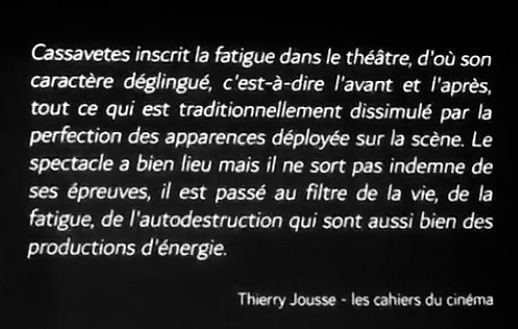
THIERRY JOUSSE
- Les cahiers du cinéma
#quote#quotation#citation#quotes#thierry jousse#les cahiers du cinéma#cassavetes#théâtre#perfection#scène#vie#fatigue#énergie#autodestruction
0 notes
Photo
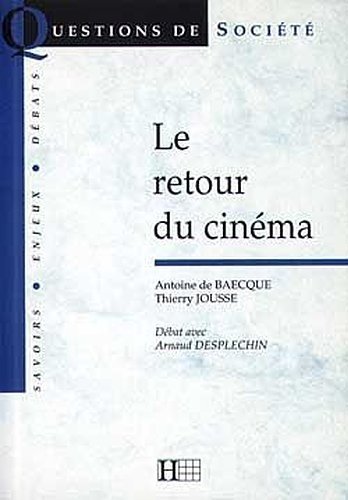
http://lemiroirdesfantomes.blogspot.com/2019/07/le-retour-du-cinema-les-metamorphoses.html?view=magazine
0 notes
Photo
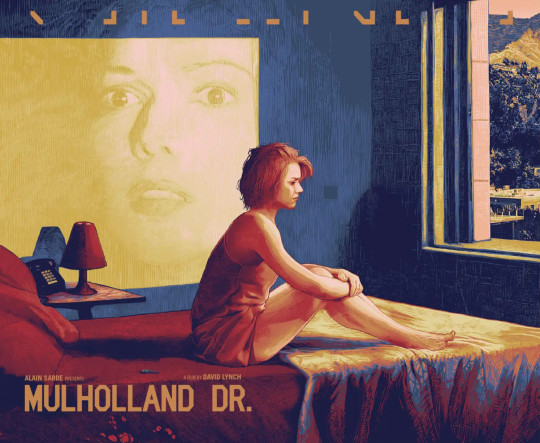
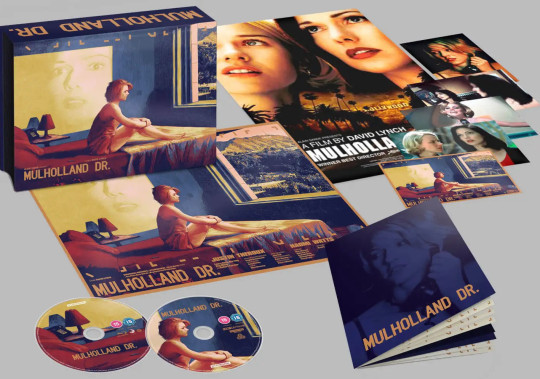
'Mulholland Drive' 20 Anniversary 4K Collector's Edition.
Collector's Edition includes:
4K RESTORATION OF THE FILM SUPERVISED BY DAVID LYNCH
Illustrated booklet including essays from Anna Smith and David Jenkins packaged in an outer clamshell box featuring all new artwork by Krzysztof Domaradzki.
Two posters
Five artcards
Back to Mulholland Drive - Featurette
On the Road to Mulholland Drive - Featurette
Interview with Laura Harring
In the Blue Box - Featurette
Interview with Mary Sweeney
Interview with Angelo Badalamenti
Introduction by Thierry Jousse
4K BLU-RAY/BLU-RAY COMBO RELEASE
4K BLU-RAY: REGION-FREE
BLU-RAY: REGION-B "LOCKED"
On sale for pre-order for £39.99 now through Zavvi.
26 notes
·
View notes
Text
Blogpost #1: La Haine
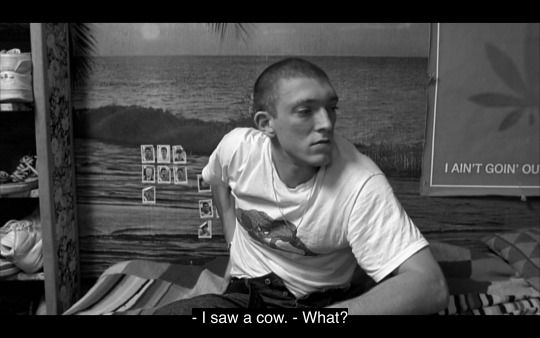
“I saw a cow.
— You saw what?
— A cow! Yesterday during the riot, I ran behind a tower, I turned around the corner and wham! I ran into a cow.
— Stop smoking, it’s hurting you.”
La Haine is structured by two appearing and disappearing objects: a gun, and a cow. The gun creates a unity of action; lost by the police during a riot, picked up by Vinz, it moves the action forward, from the banlieue to Paris and back, from urban revolt to the final gunshot. The cow is more ethereal. Vinz saw it twice, a first time “around the corner” during the riot, and a second time in an opening between buildings. The second scene — the only one during which we, spectators, are made to see the animal — is striking both visually and musically.

From a window up high, a talented neighbor is mixing NTM’s “Assassins de la police” and Edith Piaf’s “Non, je ne regrette rien.” The camera pans over gateways, openings, thresholds between the housing project’s buildings. The cow emerges in a fracture of the landscape, and Vinz tells Said:
“Check out the cow!
— Fuck off with your cow!
— On my mother’s head, it’s the same… it was right there.
— You are the cow!”
In the following scene, as Vinz cuts Said’s hair, Said asks if he’d really kill a cop (with the gun), to which Vinz responds with another question: “Do you wanna be the next Arab they smoke at the police station?” The implicit comparison is that the projects are a slaughterhouse where police kill Arabs. But “cow” is also slang for cop (“mort aux vaches”, death to cops), and the cow’s appearance to the lyrics of “Assassins of the Police” is an ambiguous image. Who does the cow stand for? Project kids who are subjected to police violence? Or the cops who might be targeted with their own weapons?
Like Vinz and Said, the cow is suspended in space and time, between the city and the country, between here and there, between the inside and the outside. The cow in the threshold grounds the film in the lost ecology of the suburbs, where projects sprouted among agricultural fields and where a slaughterhouse replaced another. Here is another, more optimistic, hermeneutics of the cow: in Henri Verneuil’s The Cow and I (1959), a French PoW escapes captivity in Germany by walking toward freedom behind a cow. “This story of a cow in the night, just like that, is too weird,” Vinz confesses at some point. By walking away from the cow, he might have hasted his own end. Halfway through the film, the disappearance of the cows foretells the final scene’s bloodbath. Longue vie aux vaches.
References:
Thierry Jousse, “La Haine: Prose Combat,” Les Cahiers du cinéma, 492 (1995) 32-35.
Peter Baxter, “An Iconography of Exclusion: Film in France, 1995,” Canadian Journal of Film Studies, 21-1 (2012) 122-133.
2 notes
·
View notes
Text
like you literally have a lead actress capable of producing a lesbian sex scene “of lyricism practically without equal in contemporary cinema” according to French critic Thierry Jousse and what did they do with that?!? they squandered it. They didn’t even hold the camera directly on her face long enough to see her look in another woman’s eyes
7 notes
·
View notes
Text
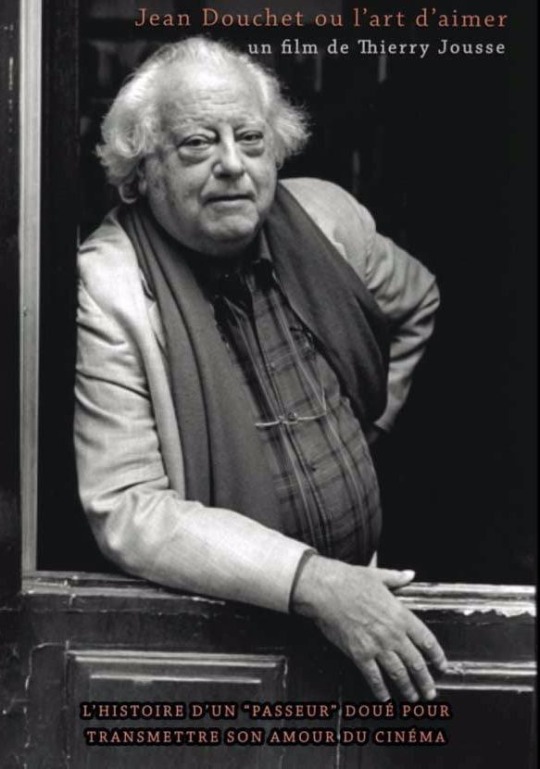
C'est avec une très grande tristesse que j'apprends la mort de Jean Douchet, critique, réalisateur et passeur de cinéma auprès de générations de cinéphiles.
Toute une génération de cinéastes français, parmi lesquels Xavier #Beauvois, Arnaud #Depleschin, François Ozon, Noémie Lvovsky ou Emilie #Deleuze, a reconnu sa dette envers lui.
J'ai eu le plaisir d'accompagner la production du film Jean Douchet ou l’art d’aimer de Thierry Jousse (2011)
Pour en savoir plus sur le film :
http://novanima.eu/jean_douchet/
Une production : Novanima Prod
en collaboration avec Gérald Leroux
Merci aux partenaires de ce film :
Région Nouvelle-Aquitaine ALCA Région Normandie Normandie Images CNC - Centre national du cinéma et de l'image animée Cinémathèque de Bourgogne Jean Douchet
ciné-cinéma Ciclic Ciclic Mémoire
Jean Douchet en quelques ouvrages :
Le Théâtre dans le cinéma, La Cinémathèque française, 1993
Alfred Hitchcock (1967) ; réédition Cahiers du Cinéma, 1999
L'Art d'aimer (1987) ; réédition Petite bibliothèque des Cahiers du cinéma, 2003
Nouvelle vague, F. Hazan, 2004
La DVDéothèque de Jean Douchet, Petite bibliothèque des Cahiers du cinéma, 2006
Jean Douchet, L'Homme cinéma : entretien avec Joël Magny, Écriture, coll. « Essais et entretiens », 2014
0 notes
Video
dailymotion
« Le plus audacieux de tous, Jean-Luc Godard, prend le contre-pied direct des films habituellement tournés en studio en allant tourner À bout de souffle (1959) dans l’avenue la plus peuplée de Paris, les Champs-Élysées, geste qui d’une certaine façon a valeur de manifeste », explique Jean-Sébastien Chauvin (« Nouvelle Vague », La Ville au cinéma : encyclopédie, sous la direction de Thierry Jousse et Thierry Paquot, Cahiers du cinéma, Paris, 2005.)
Cette très célèbre séquence des Champs-Élysées a été tournée en un seul plan et dure près de 3 minutes. Raoul Coutard, ancien reporter de guerre et chef opérateur du film, utilise la technique du reportage : caché dans un triporteur de la poste, il filme à l’insu des passants Michel (Jean-Paul Belmondo) et Patricia (Jean Seberg) qui remontent l’avenue. Pas de pied de caméra ou de pied de projecteur, mais un long travelling. À ces options techniques de prise de vues correspond aussi le choix de décors naturels, exploitant la photogénie naturelle de la ville. Là encore, c’est une façon totalement nouvelle de filmer la ville, et on peut considérer le film à cet égard comme un véritable documentaire sur le Paris de l’été 1959.
Les cinéastes de la Nouvelle Vague sortent filmer les “vrais” gens, la vraie ville, de vraies rues, une foule réelle au milieu de laquelle les héros, fictifs eux, évoluent.
Sources : Jean-Sébastien Chauvin, « Nouvelle Vague », La ville au cinéma : encyclopédie, sous la direction de Thierry Jousse et Thierry Paquot, Cahiers du cinéma, Paris, 2005.
via Réseau Canopé
1 note
·
View note